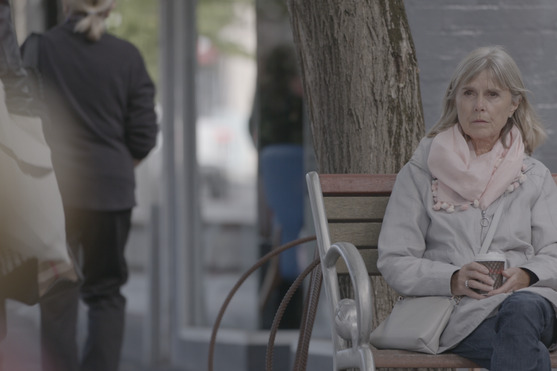Under Cover film continues to move audiences at community screenings

Banner image supplied by Under Cover film with thanks
It was a pleasant summer evening in the East Melbourne suburb of Ringwood last night as a mostly female crowd packed into Karralyka Centre for a sold-out screening of Sue Thomson’s documentary Under Cover. This community screening is hosted by the Eastern Affordable Housing Alliance, a coalition of six councils in Melbourne’s outer east, which advocates for increased investment in social and affordable housing .
Under Cover has touched audiences around the world with its depiction of the lives of women who find themselves without housing in their later years. These women represent the fastest growing cohort among the homeless – women over 50. The numbers, no matter how many times they are repeated staggering. As Margot Robbie’s narration tells us, the 2016 census identified over 400,000 women who were homeless or on the brink of homelessness.
The film tells the human story behind the numbers. Less than 5 minutes into the screening, the audience laugh along with the film’s subjects’ jokes, which provide moments of relief in their confronting stories.
By the time the film ends, there has been a marked shift in the mood. The lights come up on a sombre audience.
Speaking to Philanthropy Weekly earlier this week, director Sue Thomson says that she came across the issue when she tuned in to an episode of SBS’s Insight program and saw a panel of women discussing their experiences of homelessness. One woman in particular stood out.
“She was a librarian and living in her car,” she says.
Sue recognised herself in this woman’s story. She, herself was in her fifties with very little superannuation. While she had a lovely life, she could suddenly see very clearly how easily that could change.
“I thought this is me,” she says.
Under Cover illustrates her point by contrasting the stories of the women’s lives now against their lives before they began living in their cars or sleeping rough. As one woman puts it, these women have done all the things that they were “supposed” to do, many had married, raised children, or even had successful careers. Yet they’ve found that when one or two things went wrong, they found themselves with nowhere to go. Relationship breakdowns, job loss, or domestic violence left them extremely vulnerable to homelessness.
While Sue didn’t set out to make a “tear-jerker”, she’s noticed how much the film seems to move audiences.
“That’s the power of documentary-storytelling,” she says. “You can hear something and think yes that’s sad but when you see it, it hits differently.”
In her keynote following last night’s screening, Jane Caro echoes this sentiment. “It’s a wonderful thing to hear people tell you stories of their lives,” she says. “It’s how we connect as human beings.”
The evening concludes with Jane leading a panel including Sue. They are joined by researcher Dr. Kate Raynor, architect and author Sophie Dyring and Diane, one of the women interviewed for the documentary.
As the discussion turns towards solutions to the problem, Sue says that when she set out to make the film, she believed that she would be able to present a series of concrete solutions.
“I really thought I would do that,” she says.
“The most efficient and scalable solution is building more social housing,” says Kate, noting that successive governments have been investing less and less into this area for over thirty years.
One of the final questions from the audience comes from a young woman, who says that the film and hearing from the panel has scared her.
“What can I do to protect myself?” she asks.
The panel is unanimous in their advice to her, that as an individual she can make sure she has some of her own money saved for emergencies and make additional contributions to superannuation.
While the panel is clearly happy to offer one young person advice, it doesn’t overshadow the overall consensus that they arrived at this evening. The homelessness problem requires broader action than individuals can accomplish alone, and that the need for greater investment in social housing is still growing.
Under Cover is available to stream on ABC iview. If you are interested in hosting a community screening of the film, please visit the Under Cover website.